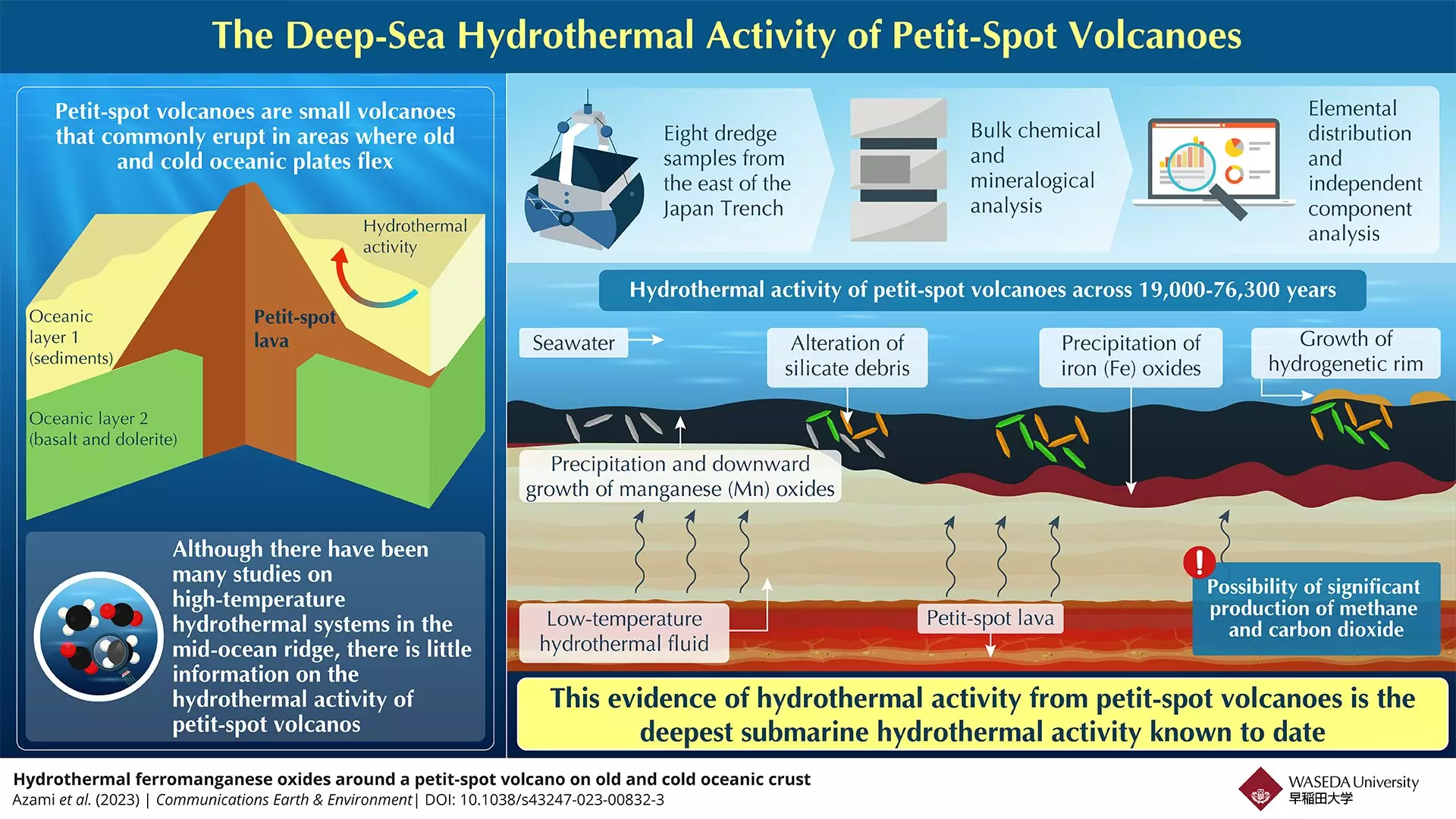Underwater volcanoes located on the Earth’s crust contribute to the oceanic environment by providing different elements and playing a crucial role in biogeochemical and chemosynthetic cycles. While high-temperature hydrothermal systems in the mid-ocean ridge have been studied extensively, there is not much information available on low-temperature hydrothermal systems in other volcanoes, such as “petit-spot” volcanoes. These small volcanoes are found worldwide in regions where oceanic plates flex, and recent studies have found that they erupt alkaline magma enriched in carbon dioxide (CO2) and produce hydrothermal fluid containing methane.
Research Study
A recent study by a team of scientists, including Assistant Professor Keishiro Azami from Waseda University, investigated hydrothermal deposits from a petit-spot volcano at a water depth of 5.7 km in the Japan Trench in the western North Pacific Ocean. The team analyzed dredge samples obtained from the oceanic floor near the petit-spot volcano and found that the samples were primarily composed of iron (Fe) and manganese (Mn) oxides, which were attributed to hydrothermal origin.
The researchers then performed X-ray fluorescence spectroscopy to identify the elemental distribution of the sample cross-sections and performed independent component analysis to elucidate the formation process of these Fe-Mn oxides. Their findings suggested that the formation of these oxides begins when petit-spot magma produces low-temperature hydrothermal fluid, which flows up via the sediment column and precipitates Mn oxides at the interface with seawater. This Mn oxide layer, containing silicate debris, then grows downwards toward the seabed as more Mn oxide is deposited. Eventually, this debris is altered, and Fe oxides are deposited via the same action on the interface between the low-temperature hydrothermal fluid and the Mn oxides, followed by a hydrogenetic rim growing on these deposits at the surface exposed to seawater after the cessation of hydrothermal activity.
Implications
The study found that petit-spot volcano is the deepest hydrothermal site known to date, and the chemical and mineral compositions of the samples were indicative of low-temperature hydrothermal activity. The previous research suggests that hydrothermal fluid from petit-spot volcanoes is enriched in CO2 and methane compared to that from the mid-ocean ridge. This implies that the contributions from petit-spot hydrothermal activity worldwide may have significant implications for global biogeochemical cycles, particularly the carbon cycle.
These findings highlight the presence of hydrothermal activity in cold and old oceanic plates and the need for further studies on petit-spot volcanoes. The hydrothermal activity of these volcanoes plays an essential role in marine biogeochemical cycle, and understanding it is crucial to properly evaluate its contribution to the marine environment.


Leave a Reply